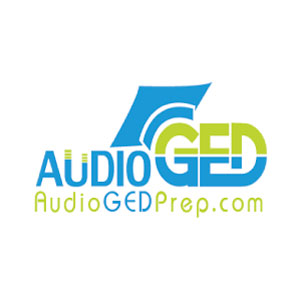Podcast: Play in new window | Download (Duration: 28:13 — 25.9MB)
Subscribe: Apple Podcasts | Email | RSS | More
Full Course is available at:
For $59.99
Lesson Summary:
Audio GED Prep Language Arts Lesson 2
Using Punctuation
Punctuation is an important part of writing properly and is a skill being lost in a world dominated by technology.
The period is used at the end of a declarative sentence and after some abbreviations such as “Mr.” or “A.M.”
The exclamation point shows strong emotion and is used after a strong command or interjection, such as “No!” Exclamation points should only be used sparingly and never more than one at a time.
The question mark is used to show that a sentence is a question. You should not use more than one or combine it with an exclamation point in formal writing. Only use a question mark after a direct question.
Commas are used in a variety of situations. They can be used in a list of items, separating stings of numbers, elements in dates and addresses, and used to separate introductory material from the rest of the sentence. They are also used before coordinating conjunctions such as “but”, “and” and “yet” when they are used to link to independent clauses and between a person and their title, such M.D. or Jr.
When using quotations, a comma should separate the quotation and the rest of the sentence. When addressing a person, you should set his or her name off by commas, or when using an appositive, which is a phrase which adds more information in a sentence.
The semicolon can be used when separating items in a complex list, such as a list of places that include cities and states. You can also use a semicolon to connect closely related independent clauses where you usually can use “because”.
Quotation marks are used to show direct quotes. They always come in pairs. They can also be used to show that certain words are a title or a short story, song, or other creative work. You should start a new paragraph whenever a new person starts speaking. Do not use quotation marks for indirect quotes.
Apostrophes are used to show possession and to create contractions. You can add ‘s to a noun to show possession, or just ‘ when the noun already ends in s. When forming contractions, apostrophes show where a letter or letters were omitted.
A dash or a hyphen is used to connect multi-word adjectives, such as well-known, and to connect complex numbers such as twenty-six or seventy-two. It can also be used to break up a word between lines. It also sets off some prefixes, such as ex- and all-.
An ellipsis is shown by three equally spaced dots and means that some words in a quotation have been omitted. It can also be used in dialogue to show that someone’s voice is trailing off.
Parentheses are used for material in a sentence that is not emphasized in a sentence and usually should have no punctuation between the two parentheses.
Source:
https://owl.english.purdue.edu/owl/resource/576/01/
©2015 Franz Amussen, All Rights Reserved
If you are interested in learning to sail listen to the podcast “Sailing in the Mediterranean”
at http://www.medsailor.com



